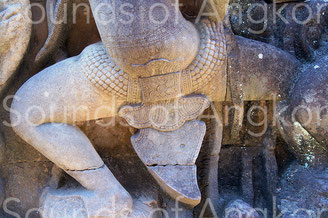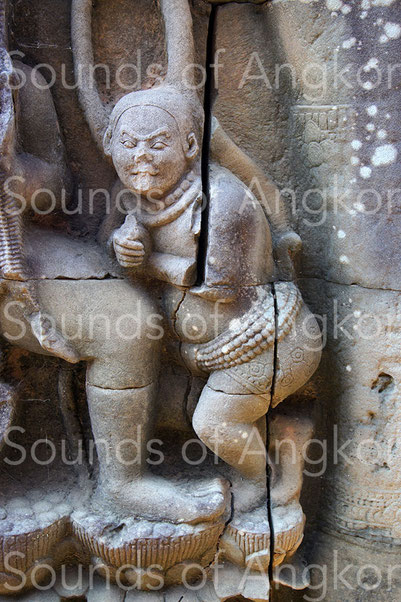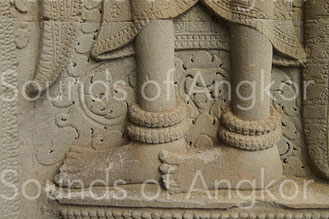Last update: December 3, 2023
The iconography shows various types of bells of 'closed' carried by dancers (male or female) and around the carrying hoop of some hourglass drums.
Bells of dancers
When the iconography represents the dancers, real or celestial, it shows necklaces and belt bells lined with a multitude of small bells of 'closed'.
Some sacred female dancers and 'devatas' in addition to their belt bells, sometimes wear sound ankles of three types: pair of bells of 'closed' with one row of bells (rare) (1), two pairs of sound ankles with double row of bells (2) or two pairs of toric bells in which are small pellets (3).
Bells of hourglass drums
The bas-reliefs depicting the hourglass drums at Angkor Wat sometimes show one (3) to two rows of bells fixed along the length of the carrying arch.
The arch of the picture 2 with its double row of bells and its sculpted hooks counts among the most beautiful representations that are, all periods confounded.
According to the iconography of the north gallery of Angkor Wat, the drummers also wore arms and ankles bracelets (1).
1. Pair of hourglass drums with arch and two rows of bells. Angkor Wat, north gallery. Battle of Asuras and Devas. 16th century.
2. This carrying arch, the most beautiful of all the Khmer iconography, reveals two rows of bells and a very beautiful scenery on the front hook. It is difficult to say with certainty what materials constituted such a device. We would opt for a rattan arch, a material that is both flexible and robust. Angkor Wat, north gallery, Battle of Devas and Asuras. 16th century.

















